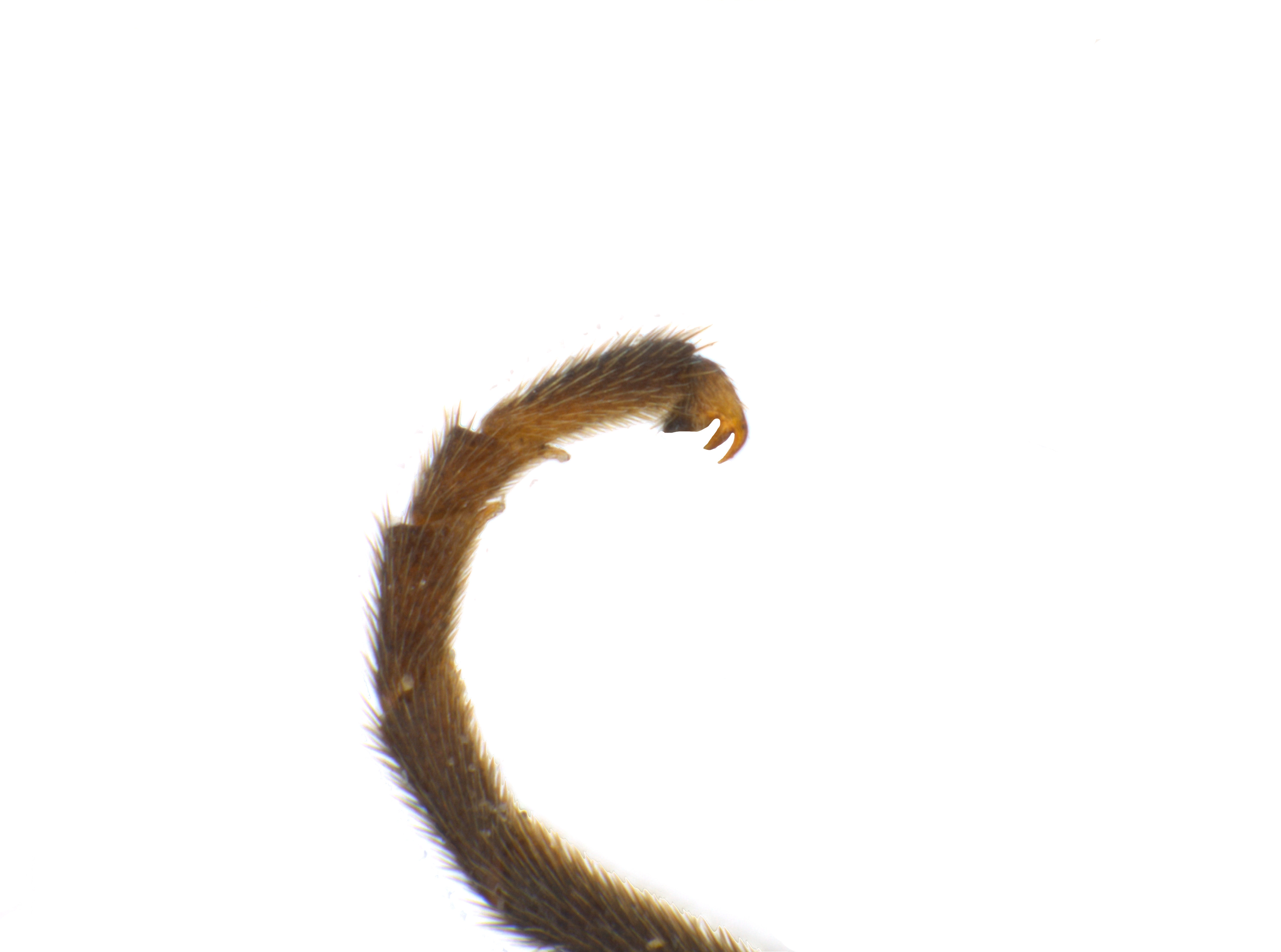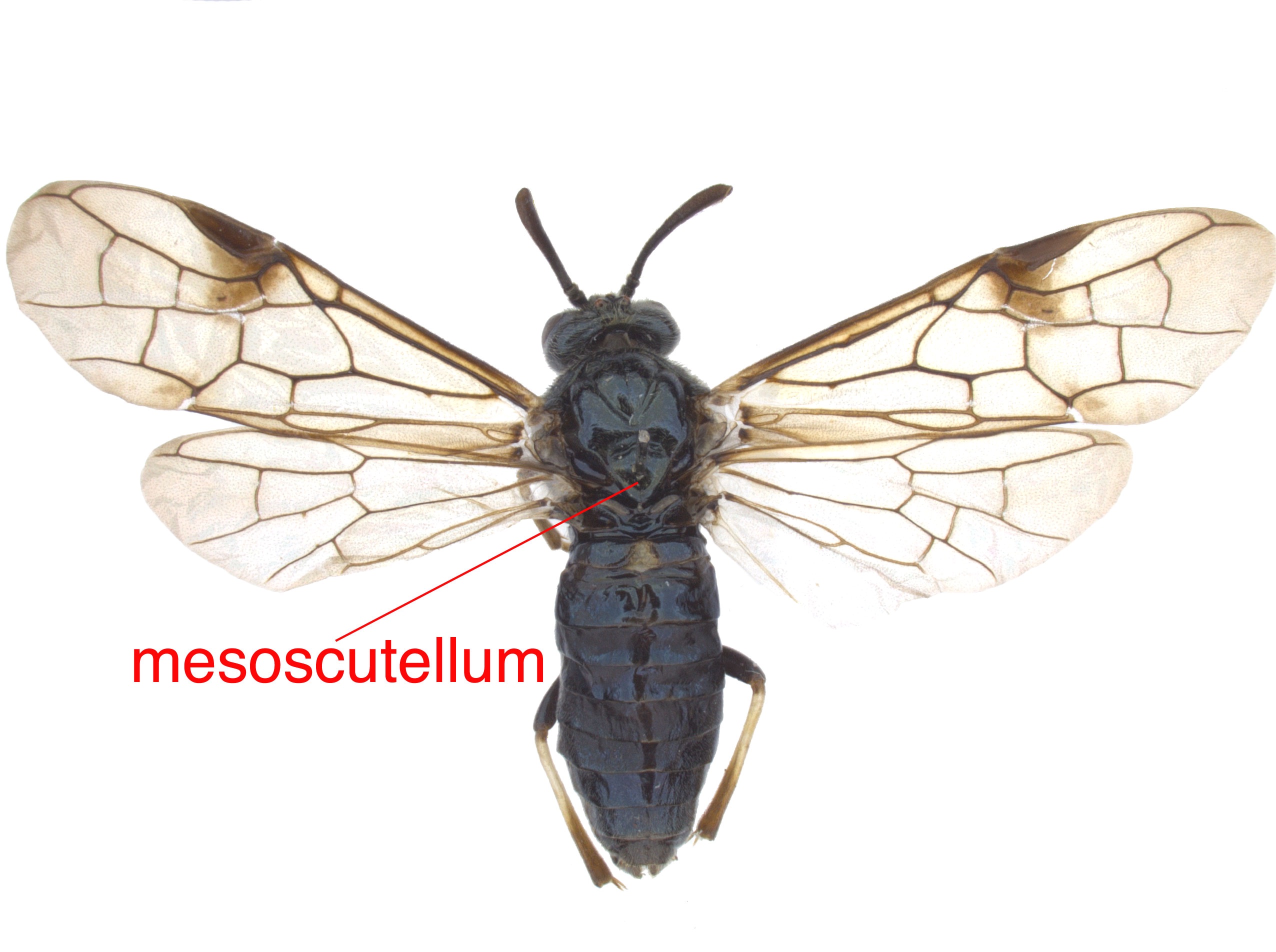Family: Tenthredinidae
Family common name: common sawflies
Subfamily: Blennocampinae
Tribe: Phymatocerini
Genus: Lagonis Ross, 1937
Subgenera: none
The Tenthredinidae are the most species-rich family and are found throughout the world, in all continents but Antarctica. They are known as the “common sawflies.” They can generally be recognized by a cylindrical body and long, segmented antennaeantenna:
the sensory organ emerging from the front of the head, usually between the compound eyes and above the clypeus; includes the flagellum, scape and pedicel
 . Otherwise, they come in a variety of colors, sizes, and forms (Goulet 1992Goulet 1992:
. Otherwise, they come in a variety of colors, sizes, and forms (Goulet 1992Goulet 1992:
Goulet H. 1992. The genera and subgenera of the sawflies of Canada and Alaska: Hymenoptera. Symphyta. The insects and arachnids of Canada. Part 20. Agriculture Canada Publication.).
Sawflies in the subfamily Blennocampinae have a diverse set of life histories and habits. Many species are restricted to subtropical and tropical regions, but the genus is still fairly species-rich in North America. Blennocampinae includes many sawflies that feed on ornamental and forestry crops. This subfamily can be recognized by wing venationvenation:
the network of veins on a wing
and bidentatebidentate:
having two teeth; often used in descrbing mandibles or tarsal claws
 mandibles (Smith 1969dSmith 1969d:
mandibles (Smith 1969dSmith 1969d:
Smith DR. 1969d. Nearctic Sawflies. I. Blennocampinae: Adults and larvae (Hymenoptera: Tenthredinidae). Technical Bulletin, U.S. Department of Agriculture 1397: 1-176.).
Lagonis is monotypicmonotypic:
describes having only one representative; ex. a genus that includes only one species
in North America. Lagonis nevadensis is about 8 mm in length and mostly black with white abdominal striping. The species has slightly different coloring along a latitudinal gradient of its range: thoraxthorax:
the second and middle segment of the body, between the head and abdomen
 mostly red in the south and entirely black in the north (Smith 1969dSmith 1969d:
mostly red in the south and entirely black in the north (Smith 1969dSmith 1969d:
Smith DR. 1969d. Nearctic Sawflies. I. Blennocampinae: Adults and larvae (Hymenoptera: Tenthredinidae). Technical Bulletin, U.S. Department of Agriculture 1397: 1-176.).
There are three described extantextant:
in existence; opposite of extinct
species worldwide. One species occurs in North America (Taeger et al. 2010Taeger et al. 2010:
Taeger A, Blank SM, and Liston AD. 2010. World Catalog of Symphyta (Hymenoptera). Zootaxa 2580: 1-1064.).
Subfamily characters
 veins Cu1 and 1m-cu between 120°–150° (Goulet 1992Goulet 1992:
veins Cu1 and 1m-cu between 120°–150° (Goulet 1992Goulet 1992: veins M and 1m-cu parallel (Smith 1969dSmith 1969d:
veins M and 1m-cu parallel (Smith 1969dSmith 1969d: veins 2A and 3A incomplete (Smith 1969dSmith 1969d:
veins 2A and 3A incomplete (Smith 1969dSmith 1969d:Genus characters
 slightly emarginated (Smith 1969dSmith 1969d:
slightly emarginated (Smith 1969dSmith 1969d: veins 2A and 3A curved upward and almost connecting to 1A (Smith 1969dSmith 1969d:
veins 2A and 3A curved upward and almost connecting to 1A (Smith 1969dSmith 1969d: cellcell:
cellcell: M present (Smith 1969dSmith 1969d:
M present (Smith 1969dSmith 1969d: (Goulet 1992Goulet 1992:
(Goulet 1992Goulet 1992: basalbasal:
basalbasal: with short inner tooth (Smith 1969dSmith 1969d:
with short inner tooth (Smith 1969dSmith 1969d:Lagonis can be confused with similar species in the subfamily Blennocampinae. It can be distinguished from most other genera by the large pits on the mesoscutellummesoscutellum:
the anterior section of the scutellum
 and mesepisternummesepisternum:
and mesepisternummesepisternum:
the ventral portion of the mesopleuron, located between the forecoxae and mid coxae
 and the upwardly curved apexapex:
and the upwardly curved apexapex:
the end or most distal area of any structure
to veins 2A and 3A of fore wingfore wing:
the anterior wing of each pair of wings; usually the largest wing of the pair
 (Smith 1969dSmith 1969d:
(Smith 1969dSmith 1969d:
Smith DR. 1969d. Nearctic Sawflies. I. Blennocampinae: Adults and larvae (Hymenoptera: Tenthredinidae). Technical Bulletin, U.S. Department of Agriculture 1397: 1-176., Goulet 1992Goulet 1992:
Goulet H. 1992. The genera and subgenera of the sawflies of Canada and Alaska: Hymenoptera. Symphyta. The insects and arachnids of Canada. Part 20. Agriculture Canada Publication.).
none
Lagonis nevadensis feeds on species of Sambucus (elderberry) (Goulet 1992Goulet 1992:
Goulet H. 1992. The genera and subgenera of the sawflies of Canada and Alaska: Hymenoptera. Symphyta. The insects and arachnids of Canada. Part 20. Agriculture Canada Publication.).
unknown
World: This genus is known from North America, Russia, and Japan (Sundukov 2017Sundukov 2017:
Sundukov YN. 2017. A new data on the Symphyta fauna (Hymenoptera) of Russia. Proceedings of the Russian Entomological Society 88 (2): 5-20., Taeger et al. 2018Taeger et al. 2018:
Taeger A, Liston AD, Prous M, Groll EK, Gehroldt T, and Blank SM. 2018. ECatSymmdash;Electronic World Catalog of Symphyta (Insecta, Hymenoptera). Program version 5.0 (19 Dec 2018), data version 40 (23 Sep 2018). Senckenberg Deutsches Entomologisches Institut (SDEI), Muuml;ncheberg. https://sdei.de/ecatsym/ Accessed: 28 Jan 2020.).
North America: Lagonis nevadensis occurs west of the Rocky Mountains, from southern California north to British Columbia and as far as Wyoming and Alberta in the eastern part of the range (Smith 1969dSmith 1969d:
Smith DR. 1969d. Nearctic Sawflies. I. Blennocampinae: Adults and larvae (Hymenoptera: Tenthredinidae). Technical Bulletin, U.S. Department of Agriculture 1397: 1-176.).
Map data from: GBIF.org (29 October 2019) GBIF Occurrence Download Lagonis
Details about data used for maps can be found here.